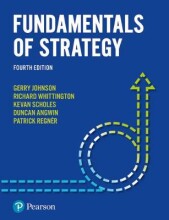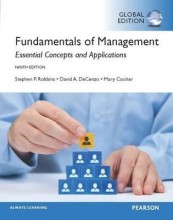Summary: Chapter 11 - Stress
- This + 400k other summaries
- A unique study and practice tool
- Never study anything twice again
- Get the grades you hope for
- 100% sure, 100% understanding
Read the summary and the most important questions on Chapter 11 - Stress
-
1 -
This is a preview. There are 1 more flashcards available for chapter 1
Show more cards here -
What is a stress response and which endocrine systems are involved?
- A suite of physiological and behavioral responses that help to reestablish homeostasis. It is non-specific, many different stressors can elicit a stress response.
- Endocrine systems that are involved are epinephrine (adrenaline) from the adrenal medulla and glucocorticoids from the adrenal cortex.
- A suite of physiological and behavioral responses that help to reestablish homeostasis. It is non-specific, many different stressors can elicit a stress response.
-
What hormones are secreted after a stressor and how is this response called?
- Within seconds, norepinephrine is secreted, and then epinephrine.
- A few minutes later, glucocorticoids, CRH and ACTH are secreted.
Response is called fight-or-flight because the physiological changes in the cardiovascular and respiratory system can support both behavioral responses. -
What axis is activated after a stressor and what is the effect of the rise in hormones?
The hypothalamus-pituitary-adrenal (HPA) axis is involved.
Effect of (nor)epinephrine rise:- Sympathetic nervous system activity increased
- Oxygen delivery to tissue increased
- Glucose metabolism increased
- Heart output increased
- Blood pressure and flow increased
Effect of CRH, ACTH and glucocorticoids:- Release of glucose, protein and fat metabolism increased
- Blood flow increased
- Behavioral responsiveness increased
- Local effects on the brain
- Sympathetic nervous system activity increased
-
Why are glucocorticoids good in mediating behevioral effects of stress?
- They are released in response to numerous stressors
- They can easily diffuse past the blood-brain barrier
- They have receptors in several brain regions
-
What is the general adaptation syndrome (GAS) and of what 3 stages does it consist?
The process of coping with stressors.- The alarm reaction
- Resistance to the stressor
- Exhaustion
-
What is the definition of stress according to Kim and Diamond?
- Stress is a condition in which individuals are aroused by aversive stimuli.
- Because arousal can increase under both aversive and pleasurable conditions, for something to be stressful, the individual must perceive it as aversive.
- The element of control in an aversive situation, as well as the element of predictability, significantly improves the long-term negative effects of the stressful experience.
-
Explain allostasis and allostatic load.
- Allostasis is achieving homeostasis or stability through physiological or behavioral change and can be carried out via alteration in HPA axis hormones, the autonomic nervous system, cytokines, or a number of other systems.
- Allostatic load is the 'cost' made by the body during allostasis.
- Allostasis is achieving homeostasis or stability through physiological or behavioral change and can be carried out via alteration in HPA axis hormones, the autonomic nervous system, cytokines, or a number of other systems.
-
What are the 4 stages over which hormones and other mediators respond to disturbances in homeostasis?
- Predictive homeostasis is the response range that contains daily and seasonal variation.
- Reactive homeostasis is the range of mediator fluctuations necessary to respons to threats.
- Homeostatic overload represents values above the reactive homeostasis range.
- Homeostatic failure represents mediator values below the predictive homeostasis range.
-
What are the adaptive stress effects and by what hormone are they caused?
- Increased immediate availability of energy. Glucagon
- Increased oxygen intake. Catecholamines
- Decreased blood flow to organ systems not necessary for movement. Epinephrine
- Supplementation of energy reserves. Glucocorticoids
- Inhibition of energerically expensive processes that are unrelated to immediate survival (e.g. digestion, growth, reproduction). Prolactin
- Decreased pain perception. Endorphin
- Suppression of feeding behavior.
- Enhancement of sensory function and memory.
- Increased immediate availability of energy. Glucagon
-
2 -
This is a preview. There are 9 more flashcards available for chapter 2
Show more cards here -
How is CRH involved in the stress response and what other things does CRH affect?
- CRH in the hypothalamus is mainly involved in regulation of the HPA axis.
- CRH in the amygdala is involved in mediating anxiety responses.
- In mice, CRH receptor antagonists decrease anxiety that is normally associated with alcohol withdrawal and social defeat.
- High CRH levels also affect spatial learning and memory.
- Higher grades + faster learning
- Never study anything twice
- 100% sure, 100% understanding































